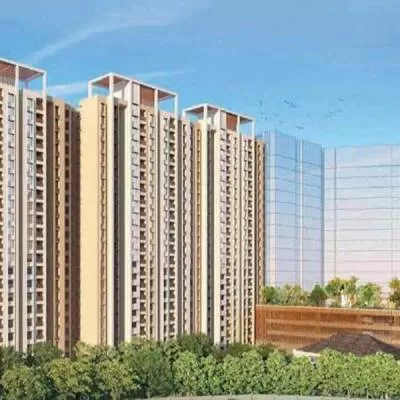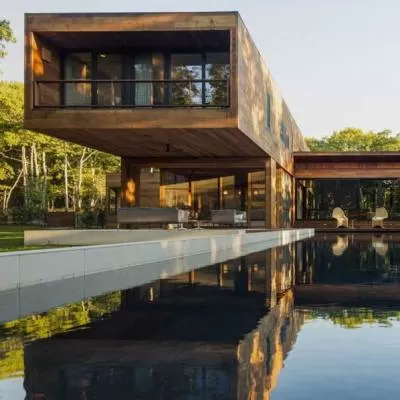- Home
- Real Estate
- Need for a structure to accommodate the burning demand for rental properties in India
Need for a structure to accommodate the burning demand for rental properties in India
Today, India is a country under construction. From building industrial nodes to smart cities, the mammoth workforce orchestrating this makeover demands an immediate switch in our housing policy. Much like the current Government’s recent focus on affordable housing, a massive exigency for rental homes stares at the country.
Housing a stigma
A house in India meant much more than the shelter where people live and raise their families. It was perhaps the first box on a checklist designed by society to judge a person. While many of our ancestors set aside their life savings for a house before walking into the sunset, today young professionals often feel the pressure of procuring a residential asset to start a family. The trend became more prevalent since 2002, which saw a mortgage meltdown in India. Home loan rates hit an historical low (ABN AMRO offered home loans at 6.75 per cent, the lowest ever). Today, the pressure has snowballed into a massive stigma for a large section of young India unable to buy a house. Worse, many of those who escaped the blemish have either found themselves engulfed in a debt trap or become prisoners of the city. In today’s fiercely competitive times where job cuts are a rampant reality, the ‘wise’ decision to buy a house might not be the wisest anymore. And many who look at residential real estate purely as an investment vehicle have also run out of steam. The National Capital Region (NCR) is a case in point where values have eroded.
The elbow room factor
The Economic Survey 2016-17 described India as the country on the move. It refers to the emergence of a free-wheeling generation averse to building their lives around a permanent fixture called ‘home’. While the debate over living in an owned residence over rental properties could be unending, certain benefits of the latter are undeniable. At the onset, you could afford a rented house more than two to three times the value of a property within your purchasing power. And the value is not restricted to just the size or quality of the apartment. It pertains to other crucial yardsticks such as social infrastructure, the time spent on the commute and the difference in overall quality of life.
Second, it could have a huge bearing on one’s career, particularly in existing times when opportunities come sans boundaries. A person in a rental accommodation is obviously more mobile compared to someone tied down by equated monthly instalments (EMIs). The advantage assumes huge relevance considering a large section of the workforce running our metro cities belongs to small towns. However, the acute shortage of rental housing in India and its unorganised structure continue to be natural pain points.
Prolonged lacuna
Despite the burning demand for rental properties, there is no structure for this kind of accommodation in India. Unlike matured economies such as Singapore and Dubai, our housing policy has failed to budget for the housing needs of scores of populations migrating across the length and breadth of the country. That explains the massive slum population infesting our metros today. According to the National Sample Survey of 2012, 71 per cent of households living on tenanted apartments did not reflect on paper. On the other hand, industry estimates show that about 11million housing units lie vacant in India. While the demand for rental homes might not be enough to offset that number, a strategic government policy could still bridge the demand-supply divide.
Worse, the pro-tenant Rent Control Act (RCA) is probably the most draconian regulation of our times. The regulation that prohibits landlords from charging market rates and leading to long-suffering litigations to evict tenants played a major role in squeezing out market confidence in rent-yielding development. However, the addition of the leave and licenses clause in the RCA act brought some reprieve for the landlords. Markets such as Europe have a flourishing rental management business, courtesy a flexible policy environment to evict defaulters and nurture investors, including pension funds with healthy returns.
Ignorance towards planned rental housing could hound India in the near future. It is high time we come out of our slumber.
About the Author:
Gulam Zia is Executive Director - Advisory, Retail & Hospitality, Knight Frank India.
For decades well past Independence, India peacefully lived with the concept of perpetual leases inherited from the colonial era. Seven decades on, the newly born republic that saw many generations live and die beneath the same roof has emerged as an economic powerhouse on the move. But the Governments’ design for housing has perhaps failed to keep pace with changing times. Today, India is a country under construction. From building industrial nodes to smart cities, the mammoth workforce orchestrating this makeover demands an immediate switch in our housing policy. Much like the current Government’s recent focus on affordable housing, a massive exigency for rental homes stares at the country. Housing a stigma A house in India meant much more than the shelter where people live and raise their families. It was perhaps the first box on a checklist designed by society to judge a person. While many of our ancestors set aside their life savings for a house before walking into the sunset, today young professionals often feel the pressure of procuring a residential asset to start a family. The trend became more prevalent since 2002, which saw a mortgage meltdown in India. Home loan rates hit an historical low (ABN AMRO offered home loans at 6.75 per cent, the lowest ever). Today, the pressure has snowballed into a massive stigma for a large section of young India unable to buy a house. Worse, many of those who escaped the blemish have either found themselves engulfed in a debt trap or become prisoners of the city. In today’s fiercely competitive times where job cuts are a rampant reality, the ‘wise’ decision to buy a house might not be the wisest anymore. And many who look at residential real estate purely as an investment vehicle have also run out of steam. The National Capital Region (NCR) is a case in point where values have eroded. The elbow room factor The Economic Survey 2016-17 described India as the country on the move. It refers to the emergence of a free-wheeling generation averse to building their lives around a permanent fixture called ‘home’. While the debate over living in an owned residence over rental properties could be unending, certain benefits of the latter are undeniable. At the onset, you could afford a rented house more than two to three times the value of a property within your purchasing power. And the value is not restricted to just the size or quality of the apartment. It pertains to other crucial yardsticks such as social infrastructure, the time spent on the commute and the difference in overall quality of life. Second, it could have a huge bearing on one’s career, particularly in existing times when opportunities come sans boundaries. A person in a rental accommodation is obviously more mobile compared to someone tied down by equated monthly instalments (EMIs). The advantage assumes huge relevance considering a large section of the workforce running our metro cities belongs to small towns. However, the acute shortage of rental housing in India and its unorganised structure continue to be natural pain points. Prolonged lacuna Despite the burning demand for rental properties, there is no structure for this kind of accommodation in India. Unlike matured economies such as Singapore and Dubai, our housing policy has failed to budget for the housing needs of scores of populations migrating across the length and breadth of the country. That explains the massive slum population infesting our metros today. According to the National Sample Survey of 2012, 71 per cent of households living on tenanted apartments did not reflect on paper. On the other hand, industry estimates show that about 11million housing units lie vacant in India. While the demand for rental homes might not be enough to offset that number, a strategic government policy could still bridge the demand-supply divide. Worse, the pro-tenant Rent Control Act (RCA) is probably the most draconian regulation of our times. The regulation that prohibits landlords from charging market rates and leading to long-suffering litigations to evict tenants played a major role in squeezing out market confidence in rent-yielding development. However, the addition of the leave and licenses clause in the RCA act brought some reprieve for the landlords. Markets such as Europe have a flourishing rental management business, courtesy a flexible policy environment to evict defaulters and nurture investors, including pension funds with healthy returns. Ignorance towards planned rental housing could hound India in the near future. It is high time we come out of our slumber. About the Author: Gulam Zia is Executive Director - Advisory, Retail & Hospitality, Knight Frank India.




















